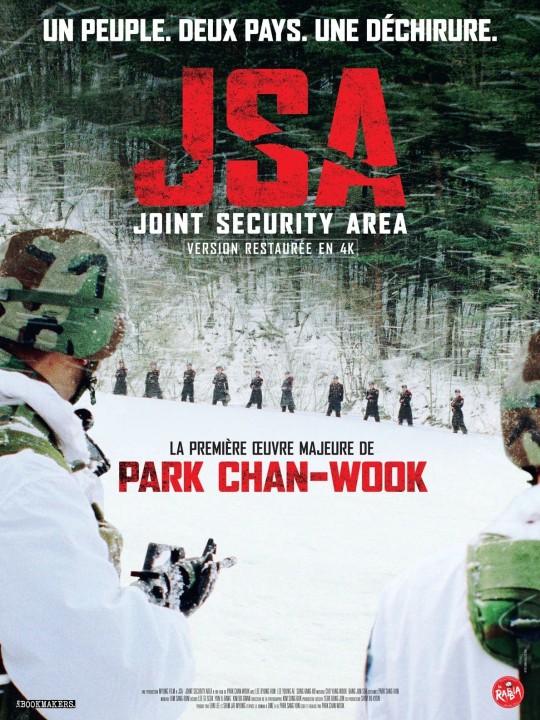#jsa joint security area
Text
The happiest of birthdays to Park Chan-wook! Thank you for making The Vengeance Triolgy!! Especially Oldboy!!


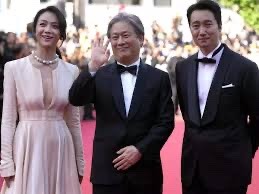
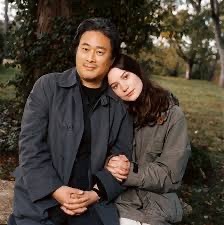

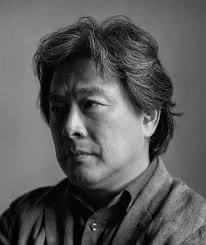




#park chan wook#oldboy#lady vengeance#sympathy for mr. vengeance#jsa joint security area#the handmaiden#thirst#I’m a cyborg but that’s okay#decision to leave#3 extremes#stoker#korean cinema#filmmaker
8 notes
·
View notes
Text
Joint Security Area [공동경비구역 JSA] (2000)

A picture really does say a thousand words. The final image of Park Chan-wook’s DMZ character study perfectly sums up the relationship between its four central characters as well as the overall tone that it sets in examining the human consequences of such a specific and thoroughly enforced piece of diplomatic work. The monochrome photograph captures Sgt Oh’s wry expression, Pvt Jeong grinning as he marches in the background, Pvt Nam against the wall and Sgt Lee moving to block the lens. There’s an irreverence hiding in plain sight here, a secret pact which Park teases out over the course of this military thriller. But even more brilliantly, the taking of the image itself served as a character beat earlier in the film. While it’s not the first time we meet Sgt Oh, this is his first true reveal, making the choice to hand a tourist’s hat which has blown over into the DPRK back over to the ROK. He’s stiff and militaristic, but capable of making humanistic gestures, we see here. Throughout the rest of the film, he is perhaps the levelest mind in the room. Though fervent in his dedication to the DPRK in his words, Oh seems to value the lives of those he cares about more when things get tense. He uses this zealotry to purposefully, perhaps, sabotage a cross-examination when Lee looks about to break and perhaps damage his future, and as we come to learn about the confrontation which sparked the investigation and film, Oh works to protect his brethren on the southern side of the border even after his comrade is shot. He’s a good man. They’re all good men, on some level. The central idyll is like a warm blanket were it not for the knowledge that this is doomed to fail violently, nightly gatherings of camaraderie. But we come as an audience to enjoy their time together goofing off and swapping cigarettes and stories. It’s a connection not seen anywhere else in this world of strict and arbitrary ceremony and custom. Even the woman investigating the incident, Swiss negotiator Maj Jean, is separated from her intimate connections, her father’s past as a North Korean general weaponized and herself distant from him. Everything is defined by this line in the sand, and yet four men found a way to step across it. If only for a moment. Neither Lee nor Nam escape the fallout, and Oh can only find the release of discharge. It’s a moment in time, a snapshot.
Director Park uses flashbacks and perspective to spool out the different potential truths at hand before revealing the full facts of the matter. It’s well-executed, but not exactly anything novel. What is more interesting is his effortless as usual command of visual storytelling through editing and motifs. Borders are at once very important and completely frivolous, as exemplified by the concrete band defining the split between the two territories. ROK soldiers line up in drills to shoot moving targets from a model version of this setup, but those same soldiers from both sides will in other instances line up to swap cigarettes and hunt rabbit in a whole different kind of war-game. Our secret friends become increasingly juvenile during their duties, early on making threats about shadows crossing the border, which escalates to a spitting contest. They can’t even maintain a straight face when on duty facing off against one another, which makes their later face-to-face encounter at deposition, when there can be no falsehood, all the more heartbreaking. Later, mulling her options, Jean walks back and forth on that line like it’s a tightrope, balancing geopolitical consequences. Park is never twee or kumbahyah, we should all just get along about it: klaxons warn of imminent invasion and the ROK border defense react, our central quartet mull the consequences of invasion and how they would have to shoot each other in such a scenario. He's not naive, but Park does arch his brow at the theatrics of it all.
Underneath all of this is a heavy layer of queer subtext. It’s almost full-on text, just have an orgy! The one thing holding this film back. Nothing’s perfect. But there’s a definite longing between these four, especially Nam and Jeong. The secrecy of night can hide these normal interactions which the outer world condemns. Further overtures are made and blissfully received as Nam witnesses a mirror being flashed from across the border and practically exits this plane of existence. Jeong enjoys the arts and receives his birthday gift rhapsodically. Coded messages—the passing of a Yankee lighter, whistling—take the place of conventional conversation. The memento of the landmine fuse intertwines intimacy of that first meeting with danger, a Very Queer Thing. Nam paints a dark line under his eye akin to Oh’s scar in homage to him. That’s right, I’m going full tinfoil here, this will DEFINITELY fit into my Grand Unified Gay Theory come hell or high water.
THE RULES
SIP
Someone says 'Commie' or 'bullet'.
A car with a diplomat flag on its hood appears in a scene.
Someone names a nation.
BIG DRINK
A flashback begins.
CGI(?) birds? Are birds real?
Song Kang-ho whistles.
#drinking games#jsa#park chan-wook#song kang-ho#lee young-ae#lee byung-hun#shin ha-kyun#kim tae-woo#korean cinema#drama#joint security area
6 notes
·
View notes
Text

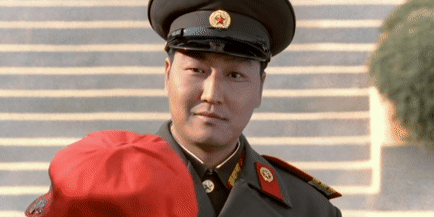





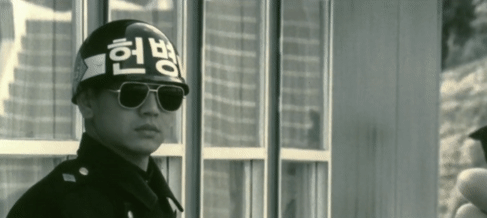

I was sure someone did this, but looked high and low and didn't find it, so here is THE scene from JSA.
#lee byung hun#song kang ho#joint security area#JSA#korean cinema#world cinema#shin ha kyun#park chan wook#my stuff#best director in Cannes this year!
78 notes
·
View notes
Text
Joint Security Area (2000)

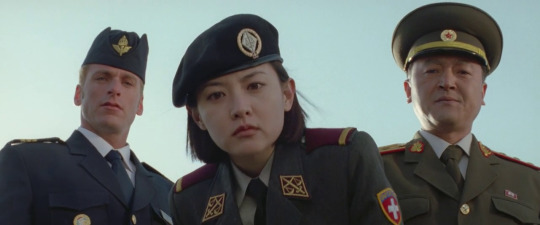
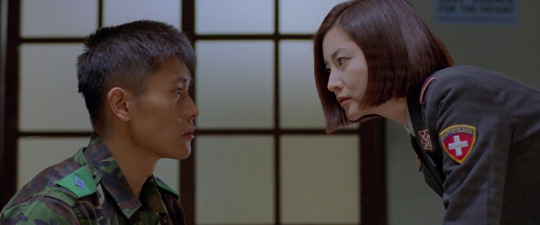

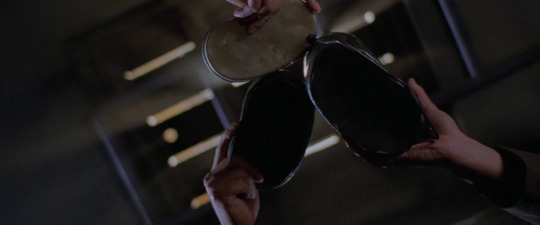
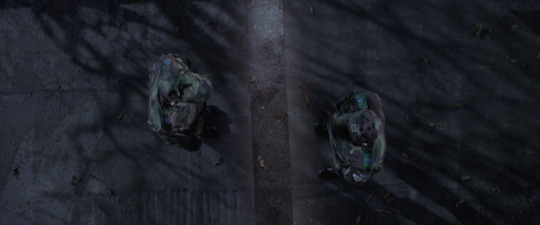
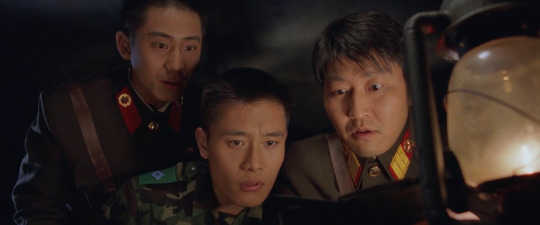
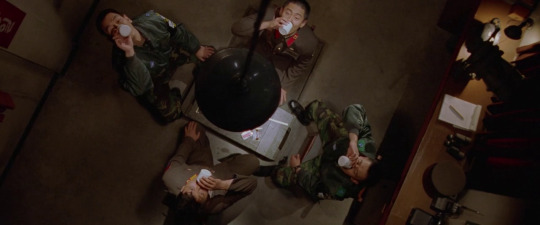


공동경비구역 JSA (Joint Security Area, 2000)
directed by Park Chan-wook
#movie#film#asian cinema#korean movie#korean film#korean cinema#공동경비구역 JSA#joint security area#lee byunghun#song kangho#shin hakyun#kim taewoo#lee young ae#park chan wook
20 notes
·
View notes
Text
JSA is a cinematic masterpiece, yet not a lot of people talk about it anymore. Strange since it has actually gone down in history as the most successful Korean movies of it's time.
I see a bittersweet irony with it's importance being forgotten and the question of unification between the north and south slowly fading into the background.
Once the war is finally over and the 2 sides have been unified, praise for the movie JSA will circulate again, calling it ahead of its time.
The impactful beauty of cinema will never cease to amaze me.
#jsa#joint security area#dmz#korea#north korea#south korea#north and south#history#park chan wook#cinema#soo hyuki thoughts
9 notes
·
View notes
Text
Park Chan Wook really said "someone is benefiting from the North-South divide but it sure as hell is not the Korean people" huh...
#that's the subtext to jsa methinks. the text is bros will be bros no matter frontiers but the subtext 👀#laura watches stuff#joint security area
9 notes
·
View notes
Text
Film Journal
"Joint Security Area (JSA)" by Park Chan-wook

0 notes
Text
The 6 places to visit in south Korea
South Korea, nestled in East Asia, is a dynamic blend of tradition and innovation. Boasting bustling cities like Seoul, it dazzles with skyscrapers, tech hubs, and vibrant street markets. Its rich cultural heritage, from ancient palaces to serene temples, harmonizes with its modern K-pop culture and culinary delights like kimchi and bulgogi.
Here are six must-visit places in south Korea:
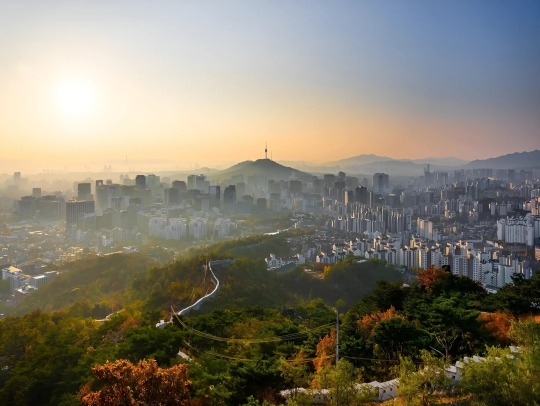
1. Seoul:
South Korea's capital city is a vibrant metropolis that seamlessly blends modernity with tradition. Explore historic sites like Gyeongbokgung Palace and Bukchon Hanok Village, shop in trendy neighborhoods like Myeongdong and Gangnam, and indulge in delicious Korean cuisine in the city's countless restaurants and street food stalls. Don't miss out on the energetic nightlife scene in areas like Hongdae and Itaewon.
2. Busan:
Located on the southeastern coast, Busan is known for its beautiful beaches, bustling fish markets, and vibrant cultural scene. Visit Haeundae Beach for sunbathing and water sports, explore the bustling Jagalchi Fish Market, and hike up to the ancient Beomeosa Temple for panoramic views of the city. Read more: Vietnam visa , Azerbaijan visa
3. Jeju Island:
This volcanic island off the southern coast of South Korea is famous for its stunning natural beauty. Explore dramatic landscapes like Hallasan, South Korea's highest mountain, visit picturesque waterfalls like Cheonjiyeon and Jeongbang, and relax on the island's pristine beaches. Don't forget to indulge in local specialties like Jeju black pork and fresh seafood.
4. Gyeongju:
Known as the "Museum Without Walls," Gyeongju is a UNESCO World Heritage site and home to a wealth of ancient ruins and historical sites. Explore the sprawling grounds of Bulguksa Temple, marvel at the intricate carvings of Seokguram Grotto, and wander through the ancient burial mounds of Tumuli Park.
5. Andong:
Located in the southeastern part of the country, Andong is known for its well-preserved traditional culture. Visit the Hahoe Folk Village, a UNESCO World Heritage site, to experience traditional Korean architecture and cultural performances. Don't miss the Andong Mask Dance Festival, where performers don colorful masks and costumes to enact traditional stories and rituals. Read More: Canada visa , Singapore visa
6. DMZ (Demilitarized Zone):
For a unique and sobering experience, consider visiting the DMZ, the heavily fortified border that separates North and South Korea. Take a guided tour to learn about the history of the Korean War, visit the Joint Security Area (JSA) where North and South Korean soldiers stand face-to-face, and explore tunnels dug by North Korea for potential military infiltration.
Conclusion
Explore South Korea's vibrant tapestry through its six must-visit destinations. From the bustling streets of Seoul to the serene beauty of Jeju Island, each spot offers a unique glimpse into Korean culture. Remember to check South Korea visa requirements before planning your journey for a hassle-free experience.
0 notes
Text
Operation Paul Bunyan: Defusing Tensions Through Unconventional Means
With American military operations, few stories are as unusual or as intriguing as that of Operation Paul Bunyan. This operation, stemming from a seemingly minor yet deadly incident, underscores the importance of psychological strategy and the lengths to which countries will go to avoid escalation while asserting dominance. This article delves into the history, execution, and implications of Operation Paul Bunyan, a testament to the power of showmanship in military strategy.
The Spark: The Axe Murder Incident
The origins of Operation Paul Bunyan lie in the tragic and bizarre "Axe Murder Incident" of August 18, 1976, in the Korean Demilitarized Zone (DMZ). A group of United Nations Command (UNC) personnel attempted to trim a poplar tree in the Joint Security Area (JSA) of the DMZ, which obstructed the view between two UNC checkpoints. North Korean soldiers, objecting to the tree-trimming, launched a violent attack on the work party, resulting in the deaths of two American soldiers, Captain Arthur Bonifas and First Lieutenant Mark Barrett, in a manner as brutal as it was shocking.
The Genesis of Operation Paul Bunyan
The incident could have easily escalated into a full-blown military conflict. However, the United States and its allies chose a path of calculated, overwhelming show of force that would not directly engage the North Korean military. Named after the giant lumberjack of American folklore, Operation Paul Bunyan was designed to assert UNC's right to maintain the area without escalating tensions into war. The operation was as much a psychological operation as it was a physical demonstration of power.
Execution with Overwhelming Force
On August 21, just days after the Axe Murder Incident, the operation commenced. An impressive convoy of military might, including engineers, infantry, artillery, and air support, was mobilized towards the JSA. The message was clear: the United States and its allies would not be intimidated or deterred from conducting their operations within the DMZ.
Simultaneously, a display of international solidarity was evident as forces from South Korea, the United States, and other UNC member states participated. The operation's psychological aspect was heightened by the presence of B-52 bombers, fighter jets, and the conspicuous readiness of the USS Midway aircraft carrier group off the Korean coast.
The Outcome and Legacy
The tree was cut down without incident, and the overwhelming display of force successfully demonstrated the UNC's capabilities and resolve. More importantly, it achieved its objectives without escalating into further violence, a testament to the effectiveness of psychological and show-of-force strategies in international conflict resolution.
Operation Paul Bunyan stands as a unique episode in military history, where the combination of psychological operations, strategic show of force, and international cooperation averted potential escalation. It highlights how unconventional approaches can defuse tense situations, ensuring peace and stability while upholding the principles of sovereignty and mutual respect among nations.
In the years following, the Axe Murder Incident and Operation Paul Bunyan have been analyzed in military academies and international relations courses as a case study in crisis management, negotiation, and the delicate balance of power on the Korean Peninsula. The legacy of Operation Paul Bunyan continues to inform contemporary strategies for conflict de-escalation and the importance of psychological warfare in achieving tactical and strategic objectives.
Read the full article
1 note
·
View note
Text
In the Zone
The DMZ or DeMilitatised Zone runs along and parallel to the border between North and South Korea.
It is effectively a buffer zone to keep the armies of the two countries separated from each other.
There are a couple of companies that offer DMZ tours out of Seoul.
One tour, run by the social activity organisation of the US Army brings you into the JSA (Joint Security Area) of the DMZ, where soldiers of both countries are both situated.
At Panmunjom, in the JSA, is a hut in this no man’s land.
Outside the hut North Korean soldiers face off with their sunglass wearing South Korean opposite number.
Maybe the South Koreans don’t want to be seen blinking!
Representatives meet in the hut to discuss matters, diplomatically, of mutual interest.
US Secretary of State Hilary Clinton visited the hut in 2010 and it resulted in a most unbelievable photo of Hilary addressing cameras.
Behind her through a window a stern, apparent giant, North Korean soldier is monitoring events.
He looks almost ready to eat Hilary.
Each of the different tours has it’s own conditions and warnings, ‘no leather trousers, no shorts, no short sleeved shirts, no camoflage gear…’, the list goes on and on.
Why no leather trousers I wonder?
Anyway I thought I could go up to a border village and see what I could see myself, outside a tour group.
It proved pretty easy. The South has expanded a metro line from Seoul so that it goes almost to the DMZ.
The distance between Seoul and border is about 56km.
At the last town before the border, Imjingak, there is an observation deck
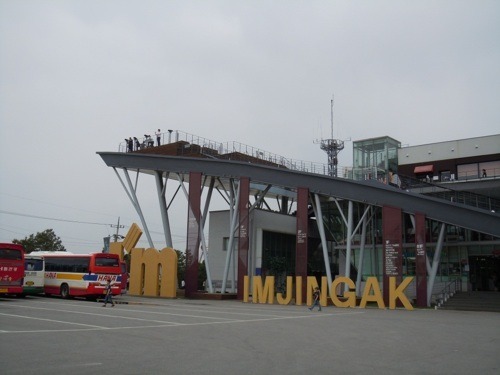
, a cafe, a gift shop, a restaurant, and a couple of museums.
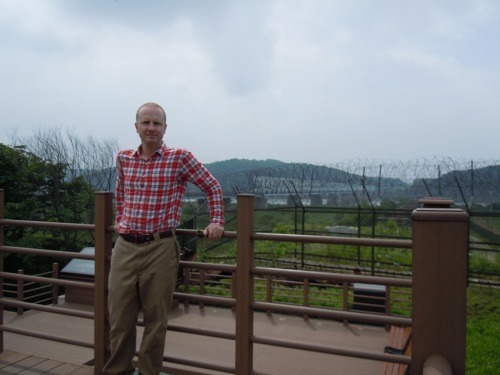
(close to the DMZ)
One museum had a photographic exhibition on how the uninhabited DMZ has resulted in almost nature reserve conditions coming about.
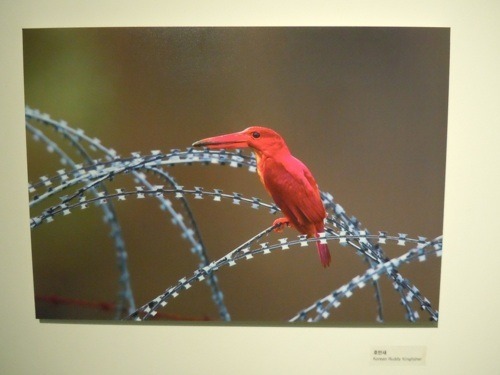
Across the road there’s a small theme park with rides for kids.
This all seems out of place at the border with a member country of the 'Axis of Evil’.
Maybe it’s South Korea’s way of normalising things.
The town of Imjingak seems to enjoy a good number of touring parties travelling to it.
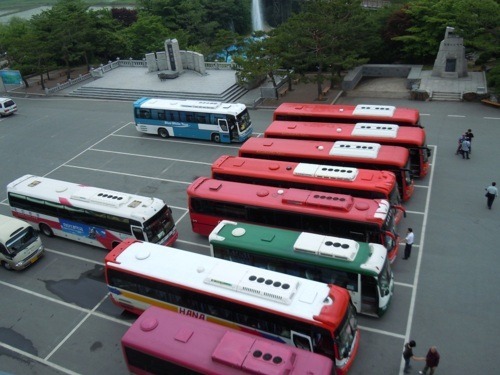
After visiting the museums and having a look around I’m too late to do the last otur of the day and have to come back another day.
The day I come back I hand over my passport, buy a ticket and board the bus.
The driver gives us a commentary.
Whatever language he’s speaking I’m not able to enjoy the yarns he’s spinning though.

We’re brought to an observation tower where you look across the DMZ below, and see North Korea.
You’re not allowed to take photos in the tower building.
Tower isn’t really quite the right word for it.
It has seats arranged like in a theatre.
Down where the stage should be are the windows that give you a view of North Korea.
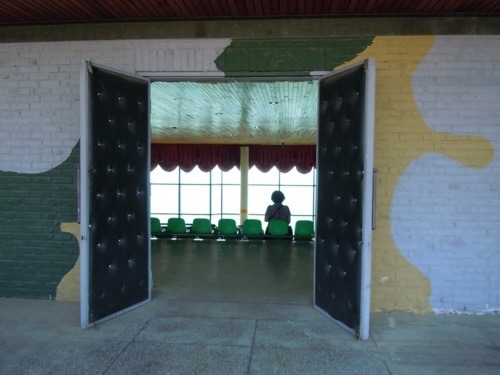
Outside there are some binoculars to see what life is like on the other side.
We’re not allowed use them as they’re refurbishing the area.
Next we’re brought to the 3rd Tunnel, a tunnel which the North made in order to infiltrate the South.
It’s only one of a number of tunnels which have been discovered by the South to date.
The North claimed they were digging for coal.
Again, no photos are allowed.
Along the way we’re brought to a DMZ museum

and gift shop.
The gift shop is selling pieces of the fence which made up DMZ border.
The fence was taken down and cut up for souveniers when a new fence was put in 2003.
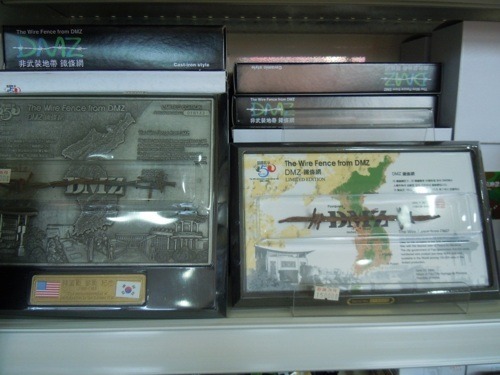
Also in the gift shop you able to buy all sorts of things associated with the area, commemorative tea towels and the like, and some produce from North Korea.


0 notes
Text
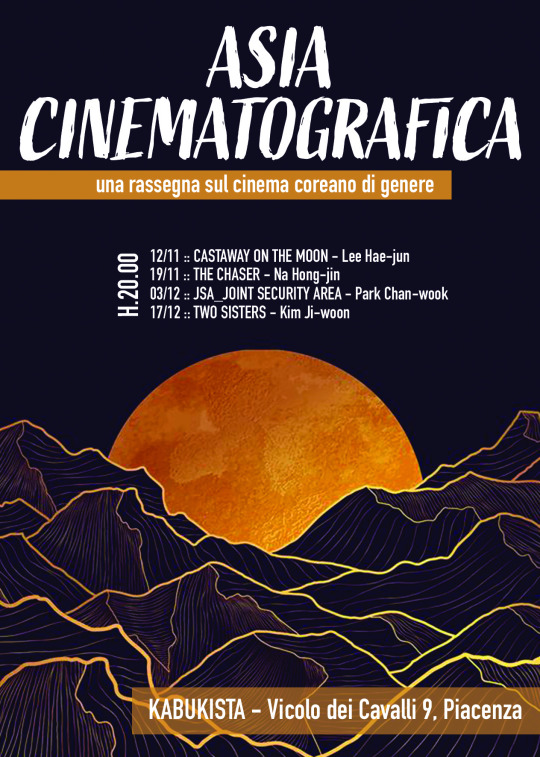
ASIA CINEMATOGRAFICA
Primo appuntamento:
Castaway on The Moon, Lee Hae-jun (Corea)
domenica 12 novembre ore 20.00
Asia Cinematografica è un progetto volto a far conoscere al pubblico piacentino il cinema mainstream dell’Estremo Oriente. Cina, Corea del Sud, Giappone, Taiwan e Hong Kong: la grande produzione cinematografica di questi Paesi verrà indagata in una serie di rassegne separate di quattro incontri serali.
Domenica 12 novembre si parte con il primo appuntamento, dedicato al cinema sudcoreano, industria che in questi anni sta avendo grande successo internazionale. Il cinema sudcoreano è soprattutto cinema di genere, per questo ad ogni incontro verra introdotto e commentato un genere diverso - commedia, thriller, dramma storico, horror - seguito dalla proiezione di un film rappresentativo. A fine proiezione sarà lasciato spazio ad una discussione con il pubblico.
A condurre la discussione sarà Serena Varrucciu, curatrice della rassegna, dottoressa in Storie e Critica delle Arti e dello Spettacolo.
Programma:
12-11, Castaway On The Moon, Lee Hae-jun
19-11, The Chaser, Na Hong-jin
03-12, JSA - Joint Security Area, Park Chan-wook
17-12, Two Sisters, Kim Ji-woon
Tutti i film sono doppiati in italiano ad eccezione di JSA - Joint Security Area, che verrà proiettato in lingua originale con sottotitoli in italiano.
Per info e prenotazioni:
Telefono e whatsapp 366 719 0091
Kabukista: Vicolo dei Cavalli 9, Piacenza
#kabukista#piacenza#kabukista teatro#silviazacchini#francesco ghezzi#serenavarricciu#asiacinematografica#corea#film#filmnews
0 notes
Link
[ad_1] SEOUL: North Korea has concluded that U.S. soldier Travis King wants refuge there or elsewhere because of "inhuman maltreatment and racial discrimination" in the U.S. and the military, state media said on Wednesday.It was the North's first public acknowledgement of the army private's crossing from South Korea on July 18 while on a civilian tour of the Joint Security Area (JSA) on the heavily fortified border between the neighbours.US officials have said they believe King crossed the border intentionally, and have declined so far to classify him as a prisoner of war.North Korean investigators have also concluded that King crossed deliberately and illegally, with the intent to stay in the North or in a third country, state news agency KCNA said."During the investigation, Travis King confessed that he had decided to come over to the DPRK as he harbored ill feeling against inhuman maltreatment and racial discrimination within the U.S. Army," KCNA said, using the North's official name."He also expressed his willingness to seek refugee in the DPRK or a third country, saying that he was disillusioned at the unequal American society."King was "kept under control by soldiers of the Korean People's Army" after his crossing and the investigation was still active, the agency added.In August, King's uncle, Myron Gates, told ABC News that his nephew, who is Black, was experiencing racism during his military deployment, and that after he spent time in a South Korean jail, he did not sound like himself.UNCERTAIN FUTUREU.S. officials have said the North had not provided substantive responses to requests for information on King.The Pentagon said it could not verify King's comments as reported by KCNA, and remains focused on his safe return. It did not address whether it had heard more details from North Korea.King's mother is concerned about his safety and appealed to North Korea to treat him humanely, a spokesperson for his family said."Ms. Gates is aware of today’s 'report' from KCNA," the spokesperson, Jonathan Franks said in a statement, referring to King's mother. "DPRK authorities are responsible for Travis King's well-being, and she continues to appeal to them to treat him humanely"It added that King's mother had been in touch with the Army and appreciated a statement by the defence department that it remained focused on bringing him home.The White House did not immediately respond to a request for comment.A spokesman for the United Nations Command (UNC), which oversees the border village where King crossed, said he did not have anything to add to previous statements."Mentioning King's willingness to seek refuge in North Korea or a third country shows that it's still unclear where he wants to go," said Yang Moo-jin, a professor at the University of North Korean Studies in Seoul.Tae Yong-ho, a former North Korean diplomat and now a South Korean lawmaker, said state media's description of King as an "illegal intruder" rather than voluntary defector, as well as its mention of a third country, could suggest that North Korea might not be willing to hold him for long."It raises the possibility for North Korea to send him to a third country, where U.S. officials can pick up and bring him home if he wishes," he said in a statement.How to classify the 23-year-old has been an open question for the U.S. military.Although he is an active-duty soldier and the United States and Korea technically remain at war, factors including King's decision to cross into North Korea of his own free will, in civilian attire, appear to have disqualified him from POW status, U.S. officials have said.King, who joined the U.S. Army in January 2021, is a cavalry scout with the Korean Rotational Force, which is part of the U.S. security commitment to South Korea.But his posting was dogged by legal troubles.He faced two allegations of assault in South Korea, and eventually pleaded guilty to one instance of assault and destroying public property for damaging a police car during a profanity-laced tirade against Koreans, according to court documents. He was due to face more disciplinary measures when he arrived back in the United States.King had finished serving military detention and had been transported by the U.S. military to the airport to return to his home unit in the United States. Instead, he left the airport and joined a tour of the border area, where he ran across despite attempts by South Korean and U.S. guards to stop him.!(function(f, b, e, v, n, t, s) ; var TimesApps = window.TimesApps; TimesApps.toiPlusEvents = function(config) var isConfigAvailable = "toiplus_site_settings" in f && "isFBCampaignActive" in f.toiplus_site_settings && "isGoogleCampaignActive" in f.toiplus_site_settings; var isPrimeUser = window.isPrime; if (isConfigAvailable && !isPrimeUser) loadGtagEvents(f.toiplus_site_settings.isGoogleCampaignActive); loadFBEvents(f.toiplus_site_settings.isFBCampaignActive); else var JarvisUrl=" window.getFromClient(JarvisUrl, function(config) if (config) loadGtagEvents(config?.isGoogleCampaignActive); loadFBEvents(config?.isFBCampaignActive); ) ; )( window, document, 'script', ); [ad_2]
0 notes
Text
U.S. national crosses into North Korea "without authorization" on tour
World
By Haley Ott
Updated on: July 18, 2023 / 12:53 PM
/ CBS News
CBS News Live
CBS News Live 2
Live
A U.S. soldier crossed into North Korea “willfully and without authorization” and was believed to be in the custody of the country’s forces, U.S. and international officials said Tuesday. The United Nations Command, which operates the Joint Security Area (JSA) within the demilitarized zone…
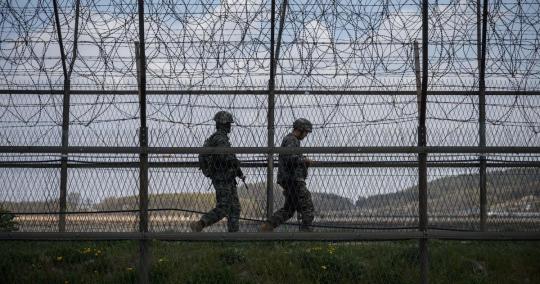
View On WordPress
0 notes
Text
Lee Young-ae in Joint Security Area (2000)
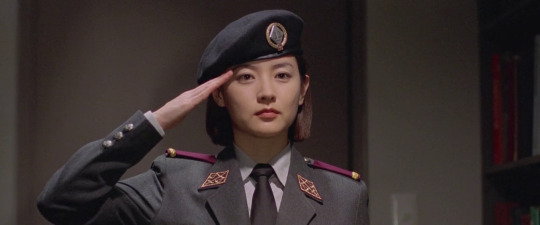
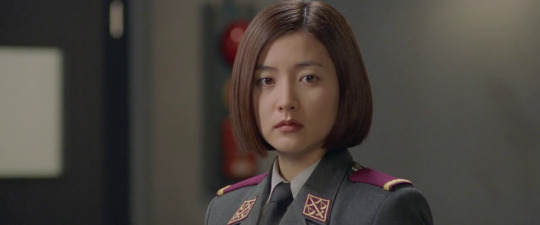

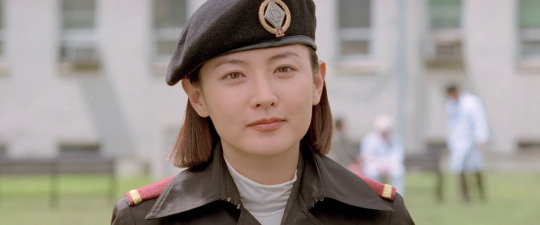
7 notes
·
View notes
Text
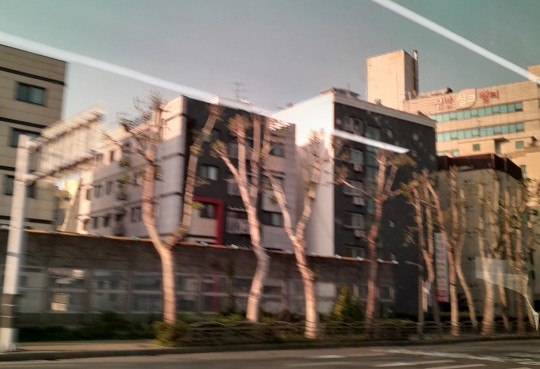
5/10/23. On way to DMZ. This tour goes to JSA, where I've been wanting to go - [have been there once, in the 80's, on a tour for mlitary personnel and DoD civilians.] The Joint Security Area is where the little house is where meetings take place (with the border line down the middle), North and South Korean guards facing off in close proximity at the JSA border, etc. The more regular DMZ tour part includes places I've been to a few times on recent trips to Korea.. (I'll pass on going down into the 3rd Infiltration Tunnel today (once was enough for this kind if claustrophic). There is the 3 kilometer wide zone [basically untouched, with the flora and fauna to prove it], and then the actual demarcation line, marked by signposts placed along it...
0 notes
